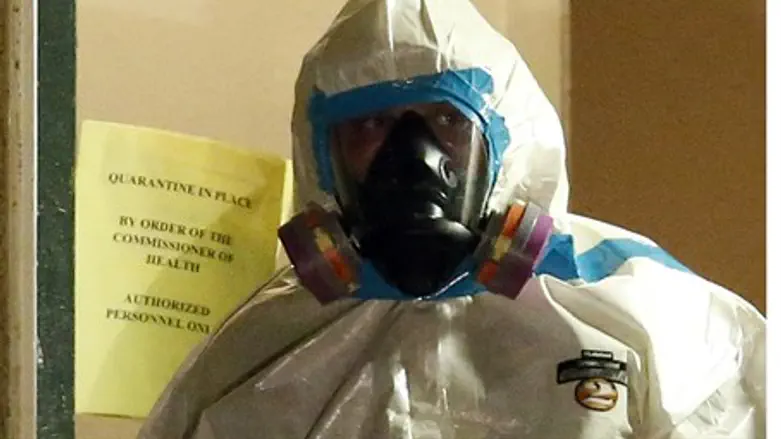
While President Obama and the United Nations continue to adamantly oppose any Ebola-related travel-ban, the US Department of Defense-funded Ebola study that was reported by Arutz Sheva earlier in the month has been updated with results which continue to show a dramatic reduction in the likelihood of importation of Ebola into a country if an 80% Air Traffic Reduction (ATR) is implemented.
The updated study also shows graphs of range of “best case” and “worst case” Ebola infected population increases in the most-grievously effected West African countries.
The likelihood of importation drops 50% for Ghana from 99% to 49%, and for the United States, the likelihood drops by 2/3, from a 75% risk of Ebola importation to a less than 25% risk.
These projections stand in stark contrast to the Obama Administration’s “not-on-the-table” rejection of imposing a travel ban from the Ebola-stricken West African countries to the United States.

In the best and worst case Ebola infected population scenario projections, by October 31, 2014, the study projects a best case of about 20,000 Ebola cases, versus a worst case of close to 50,000 Ebola cases.
The different scenarios rely principally on the amount of “contact tracing” of known infected Ebola patients. The more tracing of likely infected people the “better” the scenario.
With the flood of likely Ebola cases, how the local authorities will implement substantially improved “contact tracing” even if many more foreign medical workers are brought into West Africa is uncertain.

It should be emphasized that as Arutz Sheva reported in the first item we published on this study, shockingly, the Spread-Risk Ebola Study explicitly admitted that, “[h]owever, in the [DTRA-NIH co-funded] modeling we do not consider the possibility of cluster importation due to household members traveling together or because of direct transmission in the plane.”
In other words, hundreds of plane-passengers on one plane could be infected because they were sitting next to the Ebola-infected person, and/or went to the bathroom and sat on a toilet in the plane after an Ebola-infected person passed the Ebola virus through his urine.
And yet, the US-funded study failed to factor in the “cluster” of cases that could very likely occur “because of direct transmission in the plane.”
Some DOD-funded studies predict 250K West Africa Ebola cases, meaning that a number of people corresponding to over 5% of Liberia’s total population will be infected with Ebola by December 31, 2014. The studies approximate that 6,000 people, per week, travel by air from the Ebola-plagued West Africa into the United States. If even 1% of travelers from West Africa are infected with Ebola, that would mean 60 Ebola infected persons are entering the United States per week.